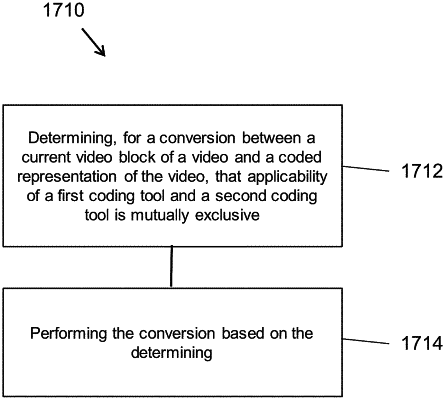| CPC H04N 19/61 (2014.11) [H04N 9/67 (2013.01); H04N 19/105 (2014.11); H04N 19/11 (2014.11); H04N 19/119 (2014.11); H04N 19/12 (2014.11); H04N 19/124 (2014.11); H04N 19/132 (2014.11); H04N 19/159 (2014.11); H04N 19/17 (2014.11); H04N 19/186 (2014.11); H04N 19/1883 (2014.11); H04N 19/30 (2014.11); H04N 19/70 (2014.11)] | 20 Claims |

|
1. A method of processing video data, comprising:
determining, for a conversion between a current video unit of a video and a bitstream of the video, that applicability of a first coding mode and a second coding mode is mutually exclusive, wherein, for an encoding operation, the first coding mode converts visual signals from a first color domain to a second color domain, or for a decoding operation, the first coding mode converts the visual signals from the second color domain to the first color domain; and
performing the conversion based on the determining,
wherein the second coding mode is an intra subpartition mode in which the current video unit is split into multiple sub-regions that share a same intra mode,
wherein in case that the first coding mode is enabled for the current video unit, the second coding mode is disabled for the current video unit.
|